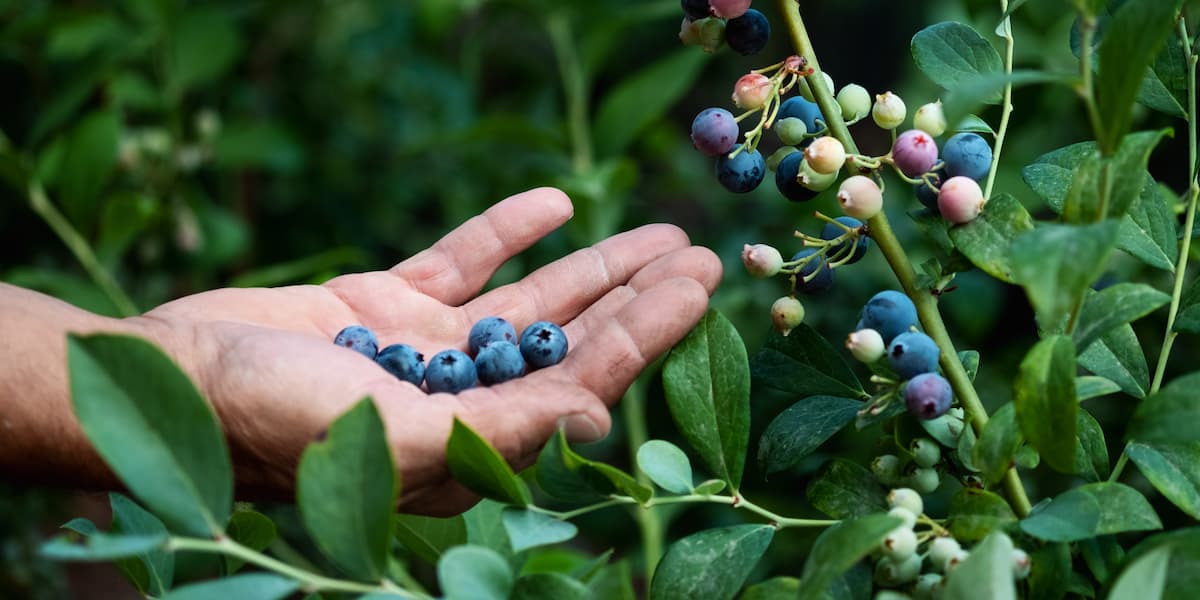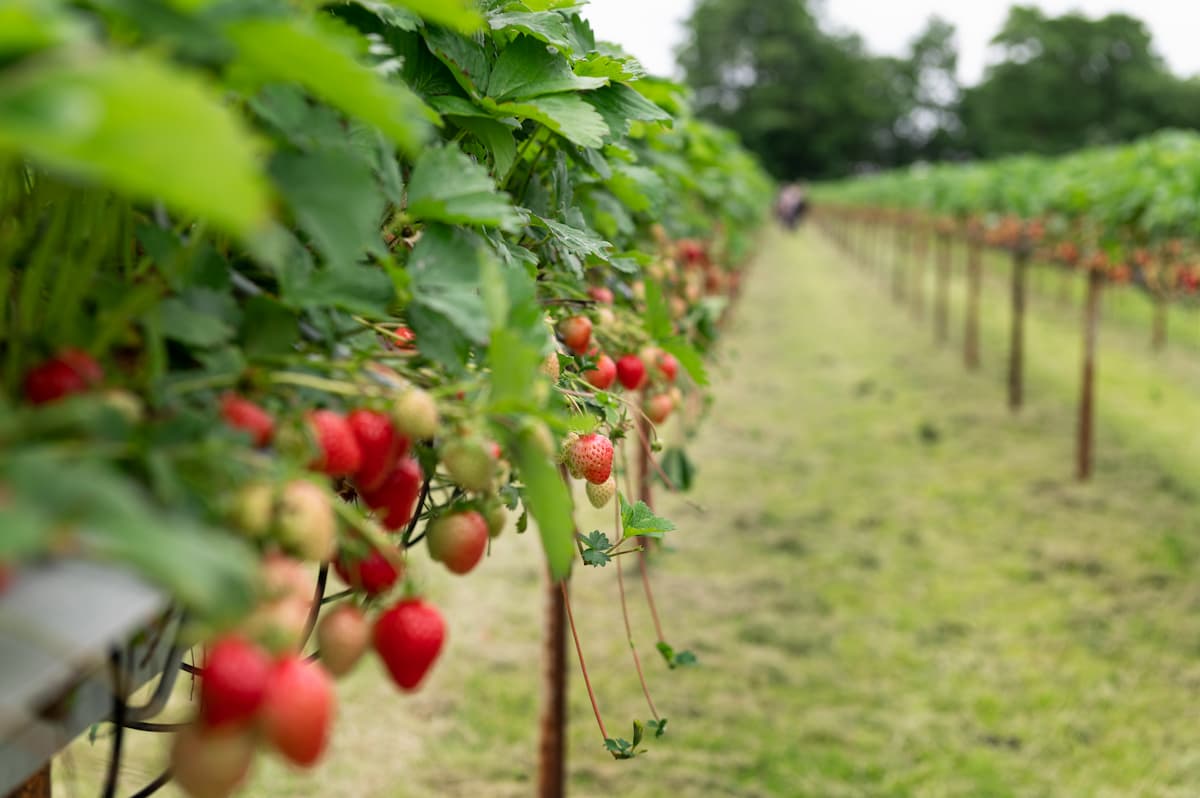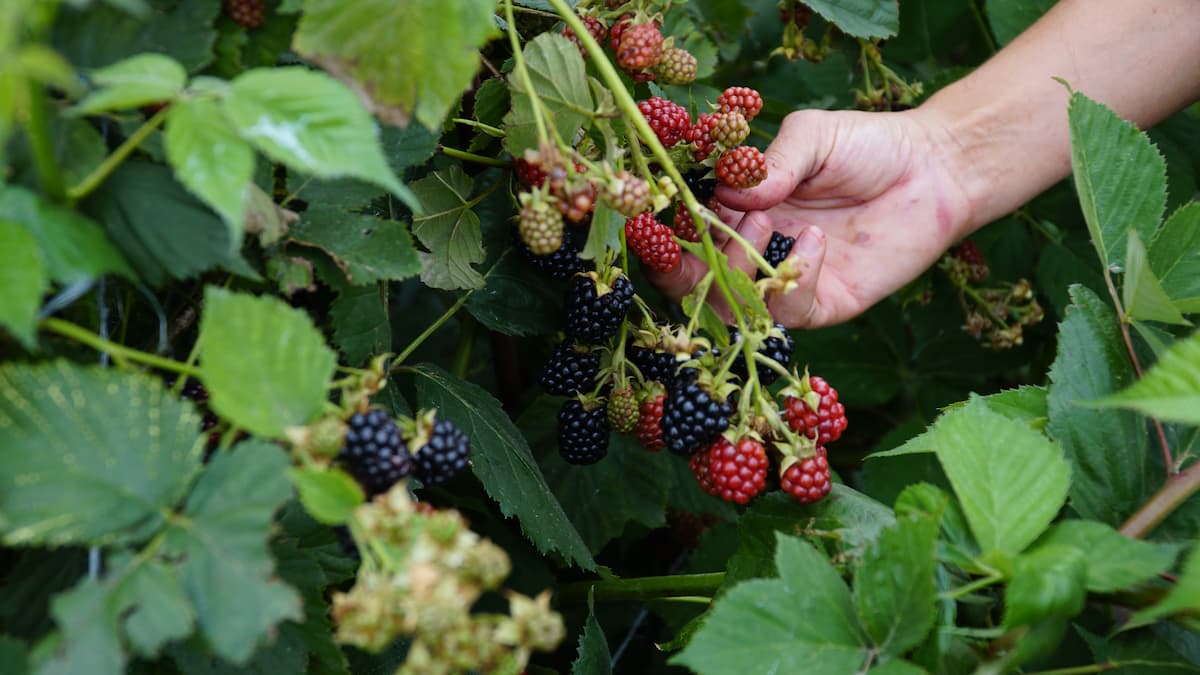California is a leading agricultural state in the United States, and one of its most popular and profitable crops is berries. The state’s diverse climate, fertile soil, and abundant sunshine make it an ideal location for cultivating a variety of berries, including strawberries, raspberries, blueberries, and blackberries. Here we learn the process of starting a berry farm in California, from selecting the right land to planting, maintaining, and finally, harvesting your berry crop.

How to Start Berries Farming in California
Land Selection
The first step in starting a berry farm in California is selecting the appropriate land. The amount of land needed will depend on the scale of your operation and the type of berries you plan to grow. For a small-scale operation, 1-2 acres of land may be sufficient, while larger commercial farms may require tens or even hundreds of acres. In either case, choosing land with well-drained, fertile soil free from disease and pests is crucial. Before you plant anything, you should get the soil tested for things like pH, nutrient levels, and general health.
The climate of California for Berries Farming
California’s diverse climate offers unique opportunities for berry farming. The state’s coastal areas, such as the Central Coast and the San Joaquin Valley, are ideal for strawberries due to their mild temperatures and abundant sunshine. Raspberries and blackberries thrive in the cooler coastal regions of northern California, while blueberries are well-suited to the slightly warmer climates in the Sacramento Valley and the Sierra Nevada foothills. When selecting a location for your berry farm, it’s important to consider both the specific climate requirements of the berry varieties you plan to grow and the microclimate of your chosen site.
Plant Selection and Plant Spacing
Once you have chosen the appropriate land and considered the climate, it’s time to select the berry varieties that will perform best in your location. Consult with local agricultural extension agents or other experienced growers to help determine the best berry varieties for your specific site. Plant spacing is a crucial aspect of berry farming, as it ensures proper air circulation and sunlight penetration, which are essential for healthy plant growth and fruit production. The following are general plant spacing guidelines for various berries:
- Strawberries: 12-24 inches apart in rows that are 3-4 feet apart
- Raspberries: 2-3 feet apart in rows that are 8-12 feet apart
- Blackberries: 4-6 feet apart in rows that are 8-12 feet apart
- Blueberries: 4-5 feet apart in rows that are 8-10 feet apart
Soil Preparation and Planting
Before planting your berry crop, it’s essential to prepare the soil properly. This may involve tilling the soil to a depth of 8-12 inches, adding organic matter such as compost or aged manure, and adjusting the soil pH based on the specific needs of the berry varieties you plan to grow. For instance, strawberries and raspberries prefer slightly acidic soil (pH 6.0-6.5), while blueberries require more acidic soil (pH 4.5-5.5).
Plant your berry plants according to the recommended spacing guidelines mentioned earlier. Be sure to water the plants thoroughly after planting, and apply a layer of mulch around the base to help conserve moisture and suppress weeds.
Irrigation and Fertilization
Proper irrigation is essential for successful berry farming in California. Drip irrigation systems are often the most efficient and effective method for delivering water directly to the plants’ root zones, minimizing water waste, and reducing the risk of disease caused by excessive moisture on plant leaves. Monitor soil moisture levels regularly and adjust your irrigation schedule to prevent overwatering or underwatering. Fertilization is another critical aspect of berry farming.
In case you missed it: Frequently Asked Questions About Growing Goji Berries from Seed to Harvest

Base your fertilization schedule on soil test results and the specific nutrient requirements of your chosen berry varieties. Typically, a balanced slow-release fertilizer is applied during the growing season, with additional nitrogen applications for strawberries and raspberries and a combination of nitrogen, phosphorus, and potassium for blueberries and blackberries. Always follow the recommended application rates and timings to avoid over-fertilization, which can lead to poor fruit quality and environmental issues.
Pest and Disease Management
Berries are susceptible to a range of pests and diseases, so it’s essential to implement an integrated pest management (IPM) plan to protect your crop. This may include cultural practices such as proper plant spacing, regular pruning, and sanitation measures to remove diseased plant material and minimize pest habitats. IPM can also use biological control approaches like releasing beneficial insects.
When chemical control methods are necessary, choose the least toxic and most targeted options, and follow label instructions carefully. Consult with local agricultural extension agents or other experienced growers for guidance on pest and disease identification and management strategies specific to your region.
Pruning and Training
Pruning and training are important aspects of berry farming that promote healthy plant growth, improve fruit quality, and increase yields. The specific pruning and training methods will vary depending on the type of berry:
- Strawberries: Remove runners regularly to encourage the development of strong, productive plants.
- Raspberries: Prune canes in the dormant season, removing dead, weak, or damaged canes and thinning them to promote air circulation and sunlight penetration.
- Blackberries: Train canes on a trellis system, pruning and removing spent canes after fruiting to encourage new growth.
- Blueberries: Prune annually during the dormant season, removing dead or weak branches and thinning to maintain an open canopy.
Harvesting and Post-Harvest Handling
The timing of berry harvest will depend on the specific variety and local climate conditions. In general, berries should be picked when they are fully ripe, as they will not continue to ripen after harvest. Use clean, sanitized containers for collecting berries and handle them gently to minimize bruising and damage. Post-harvest handling is crucial for maintaining fruit quality and maximizing shelf life.
Depending on the berry variety, this may include immediate cooling, proper storage temperatures, humidity levels, and careful transportation to prevent damage. For instance, strawberries and raspberries should be cooled to 32-34°F with 90-95% relative humidity, while blueberries and blackberries should be stored at 34-36°F with 90-95% relative humidity.
In case you missed it: How to Start Watermelon Farming in California: A Step-by-Step Production Guide for Planting to Harvesting

Conclusion
Starting a berry farm in California can be a rewarding and profitable venture, with the potential to produce a high-quality, in-demand crop. By carefully selecting the right land, considering the local climate, choosing appropriate berry varieties, and following best practices for planting, maintenance, and harvesting, you can set the stage for a successful berry farming operation in the Golden State.
- Feed Your Flock for Less: Top 10 Tips to Save on Chicken Feed
- Ultimate Guide to Ossabaw Island Hog: Breeding, Raising, Diet, and Care
- Hatching Answers: The Top 10 Reasons Your Chickens Aren’t Laying Eggs
- Eggs and Economics: Breaking Down the Cost of Raising Backyard Chickens
- Defend Your Greens: Proven Methods to Keep Iguanas Out of Your Garden
- Ultimate Guide to Cinnamon Queen Chicken: A Comprehensive Guide for Beginners
- Ultimate Guide to California Tan Chicken: Breeding, Raising, Diet, Egg-Production and Care
- Ultimate Guide to Marsh Daisy Chicken: Breeding, Raising, Diet, and Care
- 10 Types of Chicken Farming Businesses You Can Start for Profits